Galapagos Islands Lava Lizards

Similar to sea lions, lava lizards are another species that visitors to the islands are likely to see, but they are far less noticeable. A considerable population of lava lizards may be found on all of the principal Galapagos Islands, with the exception of Darwin, Wolf, and Genovesa islands.
Overview
Darwin’s finches and the Galapagos lava lizards are considered to be prime examples of Charles Darwin’s hypothesis of evolution by natural selection. The theory that all seven species originated from a single species is strongly supported by the fact that each species exhibits only minor morphological, chromatic, and behavioral changes in response to their respective environments. Additionally, only one species per island, or six out of the seven species, are found on the six separate islands. This implies that every species developed independently, isolated from one another by physical obstacles and unable to breed. The fact that the seventh species lives on both the western and central islands is more intriguing. These islands were presumably connected at one time at a time of low sea levels, according to scientists. It follows that this species most likely similarly developed in isolation across a large area before splitting off into many islands.
However, the distinctions between these lizard species are negligible, and it would be nearly impossible to distinguish them if they didn’t coexist on separate islands. Usually measuring about 5 to 6 inches in length, these lizards have long tails, slender bodies, and pointed heads. However, they have the potential to grow up to a foot in length. Not only do they vary in size, color, and patterns between species, but also within them. Some have strikingly vivid colors, some with golden lines and others with copper flecks. Their hues, however, can differ greatly, ranging from gray to green, brown, or black. Though the female may be identified by her red throat, the male is usually bigger and more colorful than the female. The environment in which the animal resides usually determines these variances.

Around the Galapagos Islands, lava lizards are one of the most common reptile species
Barrier Functions of Galapagos Lava Lizards
The Galapagos Lava lizard possesses two exceptionally powerful defense systems against potential predators. The easiest is to camouflage. The ability to change hue allows lizards to better blend into their surroundings in the event of danger or temperature shift. But one of its most interesting traits is that they can drop their tail in the event that a predator snatches it. The lizard is thus able to flee while the tail keeps moving to divert the attention of the predator. Although the tails of Galapagos lava lizards may regrow, they hardly ever reach their previous length. Longer tails are thought to attract possible mates, which may hinder their chances of reproducing; yet this is a vital tool that can rescue the lizards and prolong their lives by up to 10 years.
These lizards may not look like much, but they are essential in managing populations of moths, flies, beetles, spiders, and ants, among other insects, including painted locusts. In dry periods, they have also been observed to consume vegetation. Unlike other creatures in the Galapagos Islands, the lava lizard has not been severely impacted by intense El Niño and global warming cycles because of its diverse diet. Fortunately, other than the introduction of imported predators like dogs, rats, and cats, there are now no dangers to the species. The islands that are easiest to find them on include Isabela, Santiago, Fernandina, North Seymour, Española, Floreana, and San Cristobal. Check out the itineraries we have that include these islands!
Conduct
Although they are easily approachable and exhibit little fear of humans, Galapagos lava lizards are fiercely protective of their own species. Typically, many females’ territories are included in the 400 square meter region that males defend. Male lava lizards defend their territory by threatening other lizards by performing “push-ups” in areas that are extremely visible. In addition, the males bob their heads to discourage rival males from trying to claim the region. If it doesn’t work, the act progresses to biting and tail-slapping. Though less forcefully, females “push-up” to defend their area as well.
During the mating season, which peaks during the warm season, these displays usually intensify as males mate with all females who come through their area and go to great lengths to keep them safe from rival males. A female’s monthly egg production ranges from three to six pea-sized. Depending on the species, they are deposited deep in the ground, and the young are allowed to fend for themselves until they come up 3 to 12 months later.
Blog Reviewed by Francisco Dousdebés
Photograph by Francisco Dousdebés
RELATED STORIES
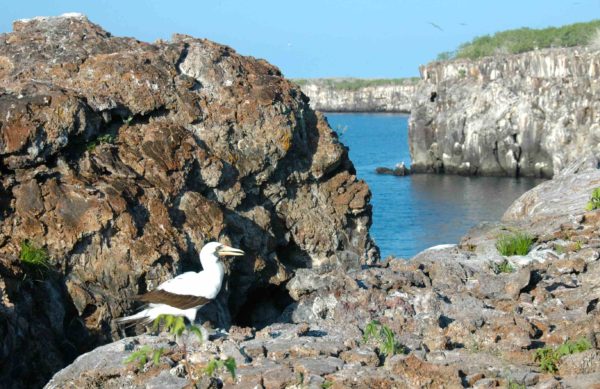
Interesting facts about the three types of boobies in the Galapagos

Food on a Galapagos Cruise: We’ve Got You Covered
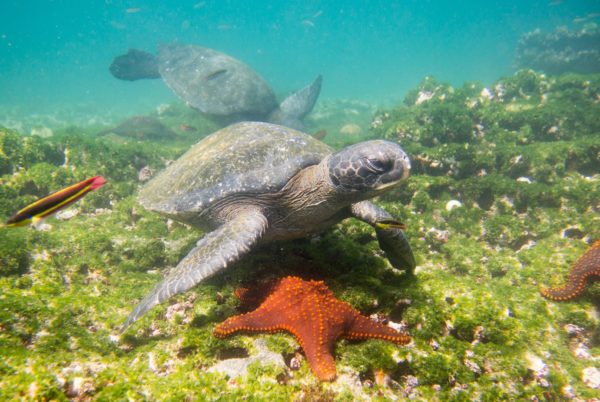
My Favourite Sea Turtle Experience Aboard the Santa Cruz II

First Day Aboard the Santa Cruz II
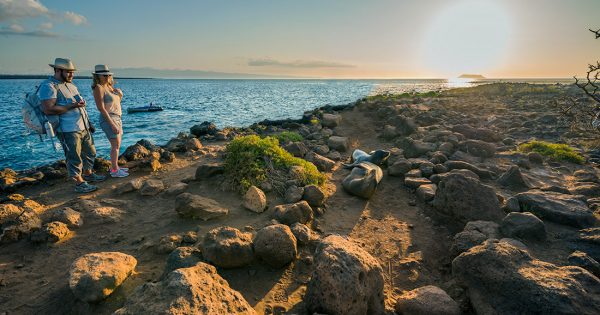
North Seymour Frigates and Boobies
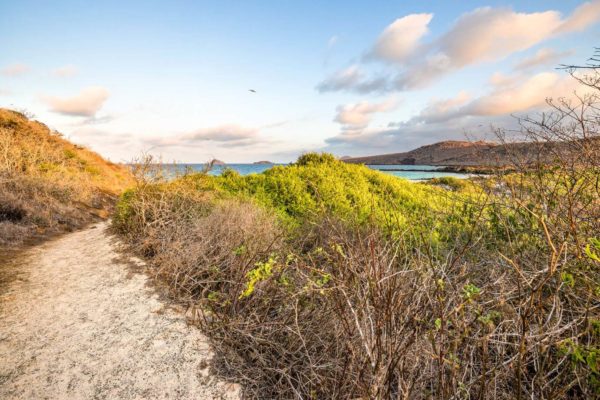
Ecuador Facts (Vol. I): An Interesting Collection of Natural Wonders and Achievements
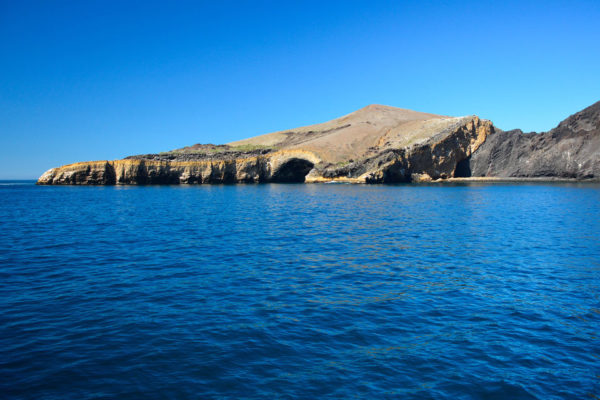
Galapagos Experience Testimonial
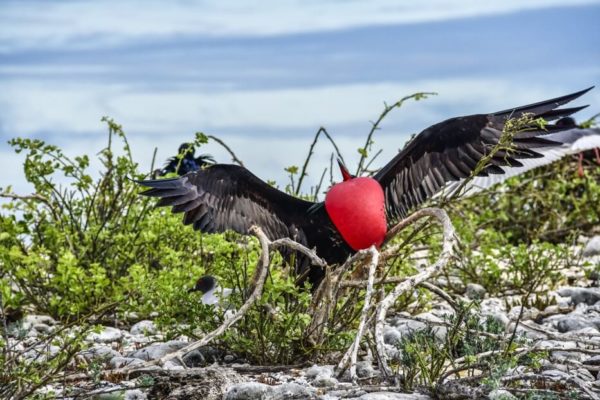
Galapagos Frigatebirds: A Colorful Medley of Courting & Nesting
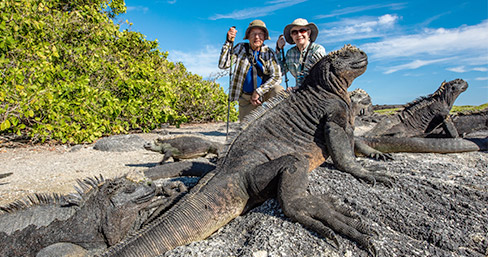
The Beauty of an Intimate Galapagos Vacation
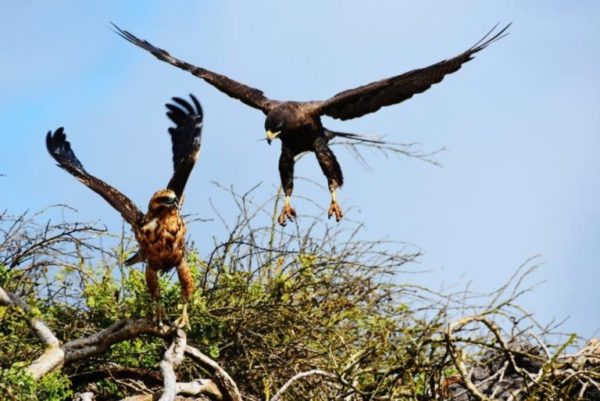
A Synopsis of Galapagos Plant Life’s History
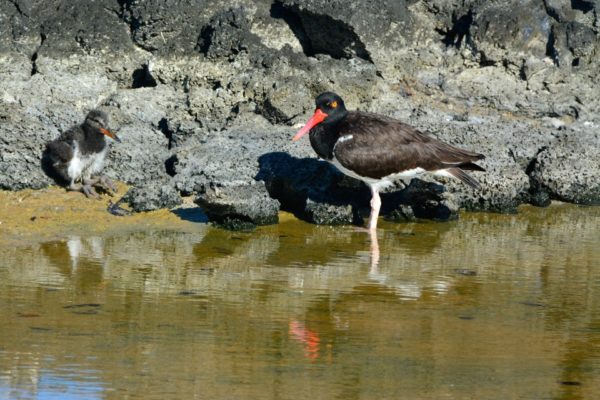
Hidden in Plain Sight: The Galapagos Baby Oystercatcher
